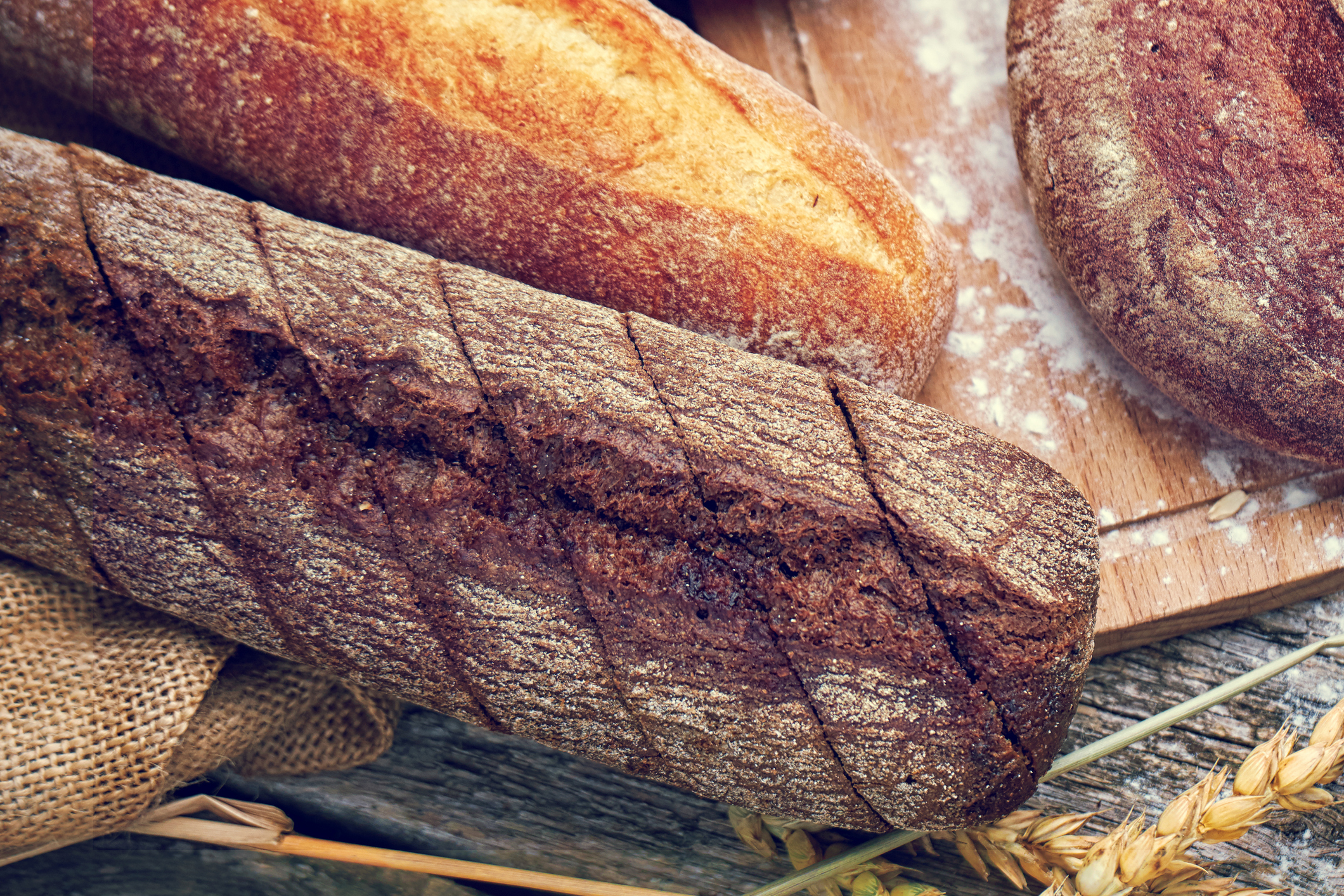Will fibre ever be fashionable?

Since the first prehistoric people hungrily eyed up a plant, we have eaten fibre. A couple of million years later, it’s widely accepted that fibre reduces the risk of heart disease, diabetes and cancer. It’s also good for digestion, nutrient deficiencies, gut microbiome imbalances, cholesterol and blood sugar levels. So what’s not to love?
Almost everything, apparently. Has a food group ever been as unfashionable as fibre? It’s indelibly associated with bowel movements, baked beans, unexciting cereals and being ‘good for you’. It’s drab and functional. It doesn’t taste spectacular. It’s barely absorbed by the body and passes through the digestive system relatively intact. It’s probably the least fun food on the planet, making it a tough marketing sell to consumers drooling over Deliveroo.
The UK does not consume nearly as much fibre as it could, or should. The NHS would like adults to eat at least 30 grams of fibre every day, but says the average adult eats around 20g, children eat around 15g. So according to the NHS, we should all significantly increase the amount of fibre we eat. But Health Writer and Dietitian Dr Carrie Ruxton says fibre consumption is “flatlining, and hasn’t improved for decades.”
The list of reasons as to why we don’t eat enough fibre is as long as the list of reasons why we should. Starting with the fact that processing foods almost always ends up removing fibre, and processed foods (including ultra-processed foods, which were recently revealed to increase the risk of cancer) form the bulk of the UK’s diet.
In 2019 a paper published by the British Medical Journal said 57% of all calories eaten in the UK came from ultra-processed foods, like chocolate, biscuits, pastries, chips, ready meals, ham, cereal, yogurt and energy drinks, and of course, white bread.
Delicious
White bread is the original poster child for processed food. The ancient Egyptians began sifting flour using hand sieves in 3,000 BC to separate coarse wheat grains from finer ones, in probably the earliest recorded attempt to process flour in the pursuit of a better looking loaf.
In the early 19th century the Industrial Revolution was accompanied by the invention of modern food production technologies like sifters and heavyweight roller mills. These refined grains to deliver smooth white flour, losing lots of good-for-you fibre in the process. By the turn of the 20th century, white bread was being mass produced at cheap prices and sold to happy customers.
From this point onward, as food manufacturing, packaging and retail evolved into the delicious multi-coloured marketing dream it is today, fibre found itself becoming a healthy ingredient punished for its appearance, taste and texture. Like a flattering Instagram filter, mass production of processed products stripped foods of their fibre-rich imperfections to make them prettier and more marketable, but left them vacuous and devoid of substance.
Snackable
A slice of wholegrain bread made with wholewheat flour, which includes the bran, germ, and endosperm of the wheat kernel, contains twice as much fibre as a slice of white bread. Fruit juice is often more convenient to consume than a piece of fruit, but juicing removes the skin, seeds and the pulp, losing 75% of the fruit’s fibre.
Removing fibre also leaves food tasting smoother and cleaner, which improves mouthfeel for the majority. Processed foods are also typically more affordable and available due to a longer shelf-life, and they make up the vast majority of on-the-go snacks.
So it’s not a surprise the UK eats a lot of processed food, but US food titan General Mills launched a snackable exception into the UK way back in 2015 – its fifteen-strong range of Fibre One bars. The range offers tempting flavours like triple chocolate, strawberry cheesecake and salted caramel, but it’s notable for its rarity as a proudly fibre-based product on supermarket shelves, bar the obvious wholegrain loaves and cereals. “Fibre is no longer a legal requirement on labels so brands will only make a fibre declaration on pack if the food meets the criteria for a nutrient claim,” says Ruxton.
In order to claim that a food is a source of fibre it needs to contain at least 3g per 100g, or 1.5g per 100 kcal. And if it wants to claim to be high fibre it needs to offer double that amount. The upshot is that fibre doesn’t get called out on packaging in the same way that trendy protein does. Ruxton suggests this “limited visibility means consumers can’t specifically look for it to achieve the recommended 30g a day.”
Fibre targets
‘Half and half’ loaves were a laudable effort by food manufacturers to address the fibre-deficit, but they recently ran into high drama.
Made with 50% wholegrain flour and 50% white flour, so an easy way for people to eat more fibre, the loaves were introduced by Hovis (Best of Both) and Warburtons (Half White Half Wholemeal) as far back as 2001.

However, the Real Bread Campaign, a project run by Sustain, says 50/50 loaves violate Section 6 of the Bread and Flour Regulations 1998, which state that any loaf advertising itself as ‘wholemeal’ must exclusively use wholemeal flour. Iceland swiftly responded by stripping 50/50 loaves from shelves in what seems like yet another cruel blow for fibre, though despite the fuss perhaps all that’s required for the 50/50 concept to survive is a tweak to the name.
The NHS has launched several fibre-related initiatives and campaigns, like the ‘5 a day’ campaign in 2003 and the Eatwell Guide in 2016. But when it comes to fibre, it’s evident that neither of them are having the desired effect.
‘5 a day’ directly addressed a lack of fibre in UK diets, and it ranks highly among public health campaigns in terms of awareness, but a lack of fibre in UK diets remains. The more comprehensive Eatwell Guide made specific recommendations for different foods, including salt, sugar and fibre. However, Ruxton says in 2020 the BMJ reported that just 7.6% of the UK were meeting Eatwell targets for fibre. Overall just 0.1% of the UK population met all nine Eatwell recommendations.
Defining the future of fibre
With more work needed to be done to convince the UK to eat more fibre, the Scientific Advisory Committee on Nutrition (SACN) is planning to increase its efforts by looking at a wholegrain definition, essentially the first step along the way to influencing government policy over the role fibre plays in the nation’s diets.
Currently in the UK there is no agreed definition for wholegrain. But in June 2022 the SACN discussed the topic of wholegrain and agreed that a definition for wholegrain would be helpful for use in future research on wholegrain and health outcomes.
“I am glad the SACN will be looking at a wholegrain definition,” says Ruxton. “Some bodies are already recommending ‘wholegrains’ but we don’t have an agreed definition and numerical or portion targets in the UK. If SACN can agree a definition, the minimum criteria for a nutrition claim, i.e. a source of wholegrain, as well as a daily target for adults and children, it would be helpful for consumers.”
She also says it would be good if the Department of Health and Social Care (DHSC) would develop a “wholegrain label or mark” that could be added to packaging, in a similar way to 5 a day. “Fibre is not well understood by consumers, either the recommendation, or different types,” she says. “This would draw consumers’ attention to good sources of wholegrain.“
School dinners
The process SACN is about to begin could deliver tangible change with fibre, like it did with sugar, vitamin C and D, folic acid and iron in pregnancy. It’s conceivable that, for example, a sustained push by the SACN on fibre that eventually translates into government health policy could see school dinners stop using ‘white’ pasta in favour of wholewheat pasta to meet fibre targets.
That would be beneficial to the health of the nation’s children, but the process is long and involved. First of all, the SACN would only need to define wholegrain if sufficient evidence exists to do so, and it may not. If it does exist, the SACN would then set wholegrain targets. Risk managers at the Office for Health Improvement and Disparities, which is part of the DHSC, would then take over and evaluate whether to allow a wholegrain front-of-pack claim, update school (or hospital, or prison) food standards, or add wholegrain awareness to their existing online education resources.
In other words, it’s not going to happen tomorrow, if it happens at all. But, looking to the future, a simpler solution could exist. Researchers at RMIT University in Australia have teamed up with Microtec Engineering Group to convert native starches such as wheat, corn and cassava into a new dietary fibre product called FiberX.
What’s special about FiberX is that 20% more fibre can be added to low-fibre but delicious foods like pepperoni pizza (and white bread) without anyone noticing. It’s invisible. Smooth, tasteless and colourless, it eliminates three of the biggest reasons fibre found itself in trouble in the first place. And for anyone hoping to see more fibre on UK plates, there is a lot to love about that.









